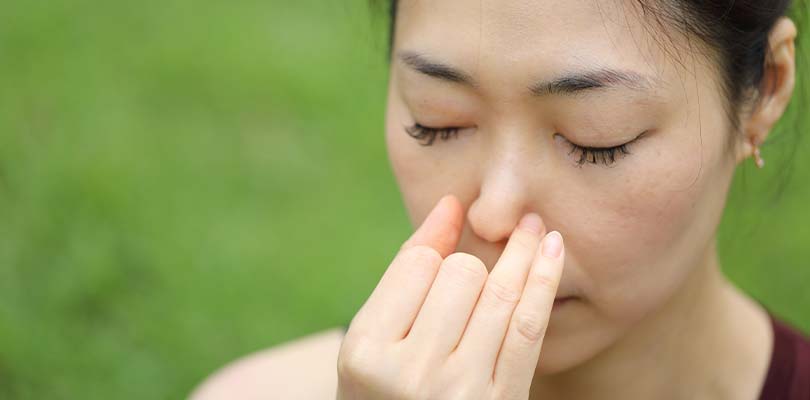Breathing Techniques for COPD
Chronic obstructive pulmonary disease (COPD) involves damage to the air sacs in the lungs. Because of the damage, one of the main symptoms of COPD is shortness of breath. Although trouble breathing is common, there are ways to manage it and decrease breathlessness before it becomes severe. Breathing techniques for COPD are one of the most helpful and non-invasive ways to make breathing easier.
What Are Breathing Techniques for COPD and Why Are They Used?
Breathing techniques for COPD are specific ways of inhaling and exhaling to help improve airflow and decrease breathlessness. There are different types of breathing exercises or techniques that can be used in combination with each other. Combining more than one breathing technique may be even more effective in some cases.
Usually, breathing techniques are a great option to help reduce some symptoms of COPD. For example, breathing techniques can be performed anywhere; you do not need any special equipment.
Breathing techniques also do not have any negative side effects and do not involve taking medication to promote relaxation. They are also very easy to learn and can be performed by anyone regardless of their stage of COPD.
What Symptoms Can Breathing Techniques Help Improve?
Although breathing techniques can help people with COPD, they do not decrease all symptoms, but they can ease certain ones associated with COPD:
Breathlessness
Shortness of breath is one of the main symptoms of COPD. When someone becomes breathless, they often breathe too fast and too shallow, which makes the problem worse. Breathing exercises help decrease shortness of breath.
Anxiety
It is very common to develop anxiety when you feel breathless. Anxiety often increases breathing problems. Breathing techniques can help you relax and focus on taking one breath at a time.
Fatigue
Struggling to breathe can become exhausting. For many reasons, COPD often causes fatigue. Using breathing techniques for COPD can make breathing more efficient and reduce how hard you work to get air in and out. Easing the work of breathing also reduces fatigue.
Low Oxygen Levels
Breathing techniques will not drastically increase oxygen levels in the body, but by improving breathing, including getting better lung expansion, it can moderately improve oxygen levels in some cases.
Different Types of Breathing Techniques
There are a few types of breathing techniques that may be helpful for people with COPD:
Pursed Lip Breathing (PLB)
PLB is one of the most common breathing techniques for people with COPD. To perform the technique:
- Breathe in through the nose for about two or three seconds.
- Purse your lips as if you were going to blow out birthday candles.
- Exhale gently through pursed lips for about twice as long as you inhaled (example, if you inhaled two seconds, exhale for four seconds).
- Repeat several times.
PLB helps people with COPD in a few ways. If you have COPD, air can become trapped in your lungs due to the damage to the air sacs. Exhaling for double the amount of time gives you time to empty your lungs and remove trapped air.
Pursing the lips also creates back pressure in the airways to help keep them open. It also helps to slow your breathing down. This technique can aid in decreasing anxiety, shortness of breath and it can improve oxygen levels due to better lung expansion.
Diaphragmatic Breathing
If you watch a baby breathe, their belly goes up and down, but as we get older, we stop belly breathing and instead we breathe with our chest. Belly breathing, also called diaphragmatic breathing, is a great technique for anyone, but especially for people with COPD.
To do diaphragmatic breathing:
- Put one hand on your upper chest and one on your belly.
- Breathe in through your nose and focus on pushing down on your abdomen, which should make your belly rise.
- Exhale through pursed lips and feel your abdomen lower.
- Practice this for about five minutes each day.
Diaphragmatic breathing can help strengthen the diaphragm and improve the total volume of air you can breathe in since it allows for better lung expansion.
Alternate Nostril Breathing
Alternative nostril breathing is commonly used during some forms of yoga. To perform alternate nostril breathing:
- Place the tip of the left pointer finger on the left nostril.
- Place the right pointer finger on the right nostril.
- Block the left nostril with your finger while inhaling through the right nostril.
- As you exhale, block the right nostril and exhale out the left.
- Do several breaths by alternating blocking one nostril on inhalation and the opposite nostril on exhalation.
Alternate nostril breathing forces you to focus on your breathing, which may help decrease the anxiety that often occurs with shortness of breath.
Do Breathing Techniques for COPD Work?
Breathing technique for COPD can be effective. Various studies indicate certain breathing techniques can help reduce COPD symptoms, such as shortness of breath.
For example, research published in the European Journal of Physical and Rehabilitation Medicine indicated that pursed lip breathing improved exercise tolerance and oxygen levels during exercise in people with COPD.
The key is to be consistent with practice, so breathing techniques become natural to perform. It is also helpful to use the breathing techniques before shortness of breath becomes severe.
